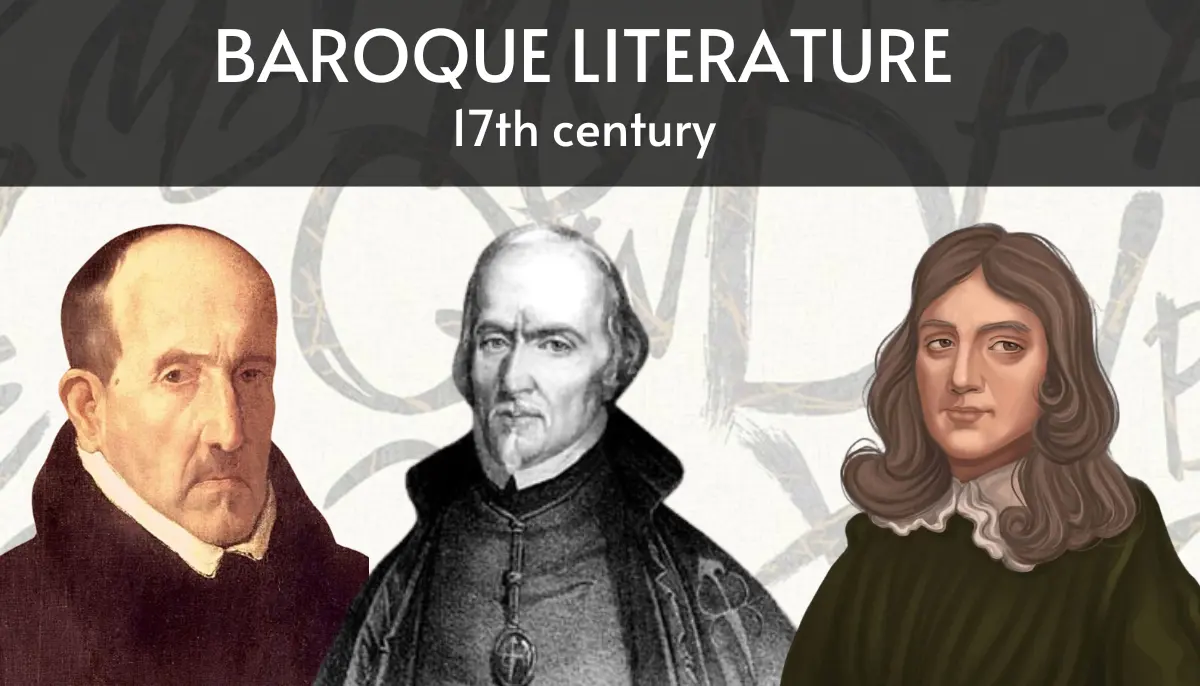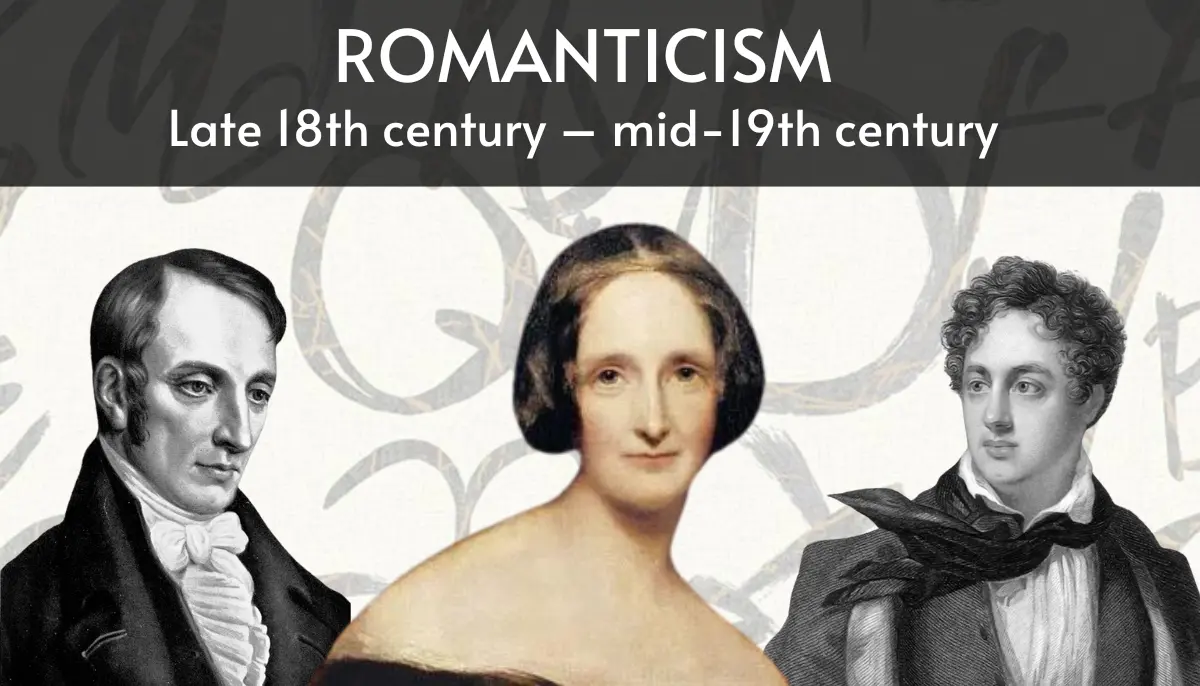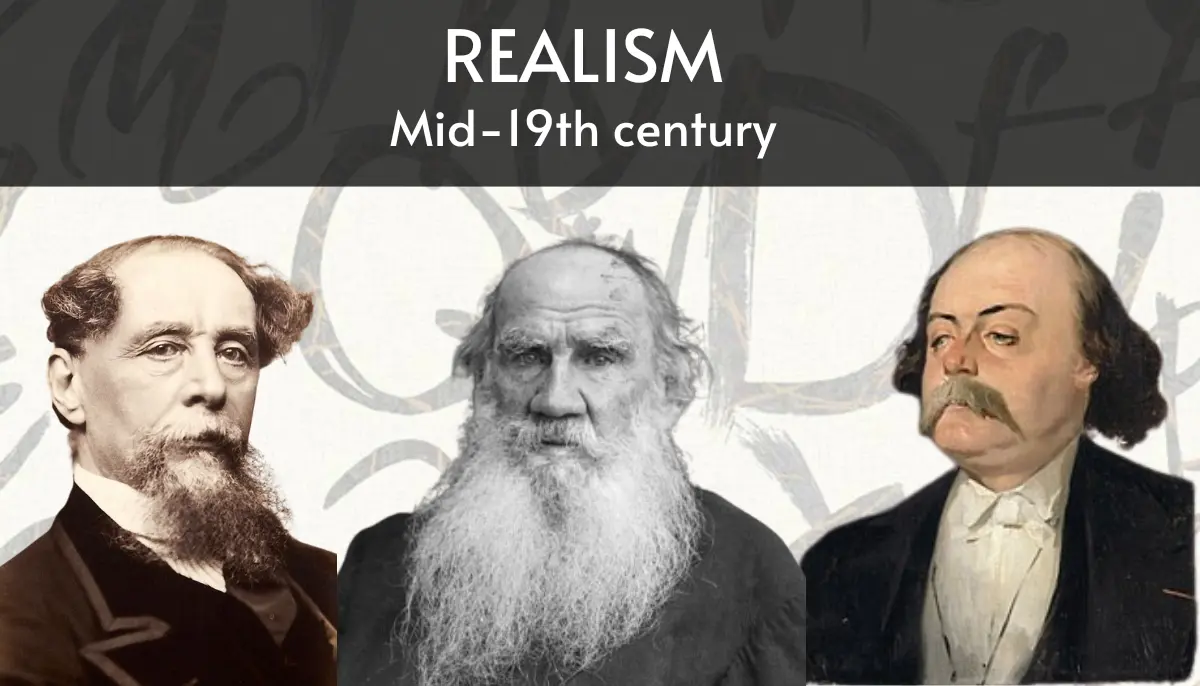Literary movements give us a unique window into how history, culture, and politics mold the way stories are told.
From the fiery passion of the Romantics to the stark realism of the Modernists, these movements reflect the spirit of their times.
Each literary era builds on or pushes back against the one before it, creating a roadmap for us to follow through centuries of human thought.
Let’s break down the 15 most influential literary movements that continue to inspire writers today.
Classical Literature (8th century BCE – 5th century CE)

Classical literature, spanning from the 8th century BCE to the 5th century CE, is all about balance, harmony, and proportion.
The writers of this time were big on reason, clarity, and exploring themes like heroism and morality.
Main Characteristics:
- Harmony and Structure: Greek tragedies, for example, followed strict formats like the three-act structure.
- Clear Thought: Writers like Homer and Sophocles used straightforward narratives that emphasized logic.
- Themes of Morality: From The Iliad to Oedipus Rex, classical works dive deep into human virtue and existential questions.
Main Authors:
- Homer: Known for The Iliad and The Odyssey, he shaped Greek culture with his exploration of heroism and mortality.
- Sophocles: His plays, like Oedipus Rex, focused on complex moral dilemmas.
- Virgil: In The Aeneid, Virgil explored Roman ideals, fate, and duty.
Medieval Literature (5th century – 15th century)

Medieval literature was dominated by religious themes, while chivalry and romance also took the spotlight.
Writers began to explore allegory and started writing in local languages rather than just Latin.
Main Characteristics:
- Religious Dominance: Faith deeply influenced works like Thomas Aquinas’ Summa Theologica.
- Allegory and Symbolism: Complex ideas were often communicated through allegorical stories, like in Dante’s The Divine Comedy.
- Chivalry and Courtly Love: Geoffrey Chaucer’s The Canterbury Tales brought to life a variety of social classes through stories of knights and pilgrims.
- Vernacular Languages: Writers like Chaucer and Dante made literature more accessible by writing in English and Italian.
Main Authors:
- Geoffrey Chaucer: The Canterbury Tales is a rich portrayal of medieval life and values.
- Dante Alighieri: The Divine Comedy is an epic journey through Hell, Purgatory, and Heaven.
- Thomas Aquinas: Summa Theologica shaped religious and philosophical thought.
Renaissance Literature (14th century – 17th century)

Renaissance literature saw a revival of classical ideals and a focus on humanism, celebrating human potential and creativity.
This era was all about individual achievement, art, and exploration.
Main Characteristics:
- Humanism: Renaissance writers focused on human experience and intellect.
- Classical Inspiration: Writers looked to Greek and Roman texts for ideas, blending them with new discoveries in art and science.
Main Authors:
- William Shakespeare: In works like Hamlet, Shakespeare explored the depths of human emotion and complexity.
- Miguel de Cervantes: Don Quixote critiqued societal norms and questioned reality itself.
- Francesco Petrarch: His Canzoniere explored themes of love and individual reflection.
Baroque Literature (17th century)

Baroque literature is all about drama, complexity, and intensity.
Writers explored metaphysical themes with elaborate language and deep emotional expression.
Main Characteristics:
- Ornate Style: Baroque writing is known for its richness and complexity.
- Emotional Depth: Feelings are exaggerated, offering a dramatic and immersive experience.
- Metaphysical Exploration: Themes often revolve around spiritual questions and the human soul.
Main Authors:
- John Milton: His epic poem Paradise Lost explores humanity’s fall from grace and the struggle for redemption.
- Luis de Góngora: His poetry, such as Solitudes, is packed with intricate wordplay and vivid imagery.
- Pedro Calderón de la Barca: Life is a Dream delves into the illusion of reality and human nature.
Neoclassical Literature (17th century – 18th century)

Drawing inspiration from classical traditions, Neoclassical literature emphasized order, logic, and social norms.
Satire became a key tool for critiquing society during this time.
Main Characteristics:
- Order and Logic: Writers followed strict forms and emphasized clear, structured narratives.
- Moral Instruction: Literature often aimed to teach lessons or critique societal flaws.
- Satire: Many authors used humor to address political and social issues.
Main Authors:
- Alexander Pope: His satirical work The Rape of the Lock is a witty mock-epic that pokes fun at high society.
- Molière: Tartuffe is a comedic play that targets hypocrisy.
- Jonathan Swift: Gulliver’s Travels critiques human nature and politics through fantastical adventures.
Enlightenment Literature (18th century)

The Enlightenment emphasized reason, science, and intellectual freedom.
Writers of this time challenged authority and tradition, advocating for liberty and progress.
Main Characteristics:
- Reason and Rationalism: Enlightenment literature favored logical thought and empirical evidence over superstition.
- Critique of Authority: Writers like Voltaire challenged power structures and long-held customs.
- Liberty and Progress: Works promoted individual freedom and societal advancement.
Main Authors:
- Voltaire: His satirical novella Candide critiques blind optimism and organized religion.
- Jean-Jacques Rousseau: In The Social Contract, Rousseau explores democracy and individual rights.
- Denis Diderot: He compiled the monumental Encyclopedia, promoting scientific thought and intellectual debate.
Romanticism (Late 18th century – mid-19th century)

Romanticism marked a shift from the Enlightenment’s focus on reason to an emphasis on emotion, nature, and individualism.
This movement arose as a reaction to the Industrial Revolution.
Main Characteristics:
- Emotion Over Reason: Romantic writers prioritized feeling and emotion in their works.
- Nature as a Healing Force: The beauty and power of nature are central themes.
- Focus on the Individual: Romanticism celebrates personal creativity and the uniqueness of human experience.
Main Authors:
- William Wordsworth: In Lyrical Ballads, Wordsworth reflects on the connection between humans and nature.
- Mary Shelley: Frankenstein blends Gothic and Romantic themes, exploring the human condition.
- Lord Byron: His epic Don Juan celebrates individualism and emotional depth.
Realism (Mid-19th century)

Realism aimed to depict everyday life, often focusing on the middle and lower classes.
Writers sought to represent life truthfully, without idealization, and frequently critiqued societal issues.
Main Characteristics:
- Focus on Ordinary Life: Realist works highlight the experiences of common people.
- Objective Narration: Writers prioritized detailed, realistic depictions of society.
- Social Criticism: Realism often included critiques of class structures and social issues.
Main Authors:
- Gustave Flaubert: Madame Bovary critiques societal norms and the disillusionment of its protagonist.
- Leo Tolstoy: In War and Peace, Tolstoy blends detailed historical settings with psychological insight.
- Charles Dickens: Great Expectations delves into class disparity and personal growth.
Naturalism (Late 19th century)

Naturalism takes Realism a step further, focusing on how environment and heredity shape human behavior.
This often results in a more pessimistic view of life, as characters struggle against forces beyond their control.
Main Characteristics:
- Determinism: Characters are heavily influenced by their environment and circumstances.
- Survival and Social Conditions: Naturalist works often depict harsh realities, focusing on themes of survival and social inequality.
- Detailed Realism: Writers used precise detail to create immersive settings.
Main Authors:
- Émile Zola: His novel Germinal portrays the struggles of coal miners and class conflict.
- Stephen Crane: The Red Badge of Courage explores the psychological impact of war.
- Theodore Dreiser: In An American Tragedy, Dreiser examines ambition and societal pressures.
Symbolism (Late 19th century)

Symbolism reacted against Realism by using symbols and metaphors to explore deeper emotional and psychological truths.
Writers of this movement were more interested in the inner world than in external reality.
Main Characteristics:
- Use of Symbols: Instead of direct representation, Symbolist writers used metaphor to convey meaning.
- Focus on Emotion: Symbolism delves into the inner workings of the human mind and emotions.
Main Authors:
- Charles Baudelaire: In The Flowers of Evil, Baudelaire uses rich imagery to explore themes of beauty and decay.
- Arthur Rimbaud: His Illuminations presents visionary landscapes through symbolic language.
- Paul Verlaine: Saturnian Poems combines musicality with deep emotional expression.
Modernism (Late 19th century – mid-20th century)

Modernism broke away from traditional forms, experimenting with new styles and techniques.
This movement reflected the fragmented and disillusioned world of the early 20th century.
Main Characteristics:
- Experimental Forms: Modernist writers played with structure and style, often using stream-of-consciousness or fragmented narratives.
- Themes of Alienation: Modernist works often explore the individual’s isolation in a confusing world.
Main Authors:
- James Joyce: Ulysses is a masterpiece of stream-of-consciousness, capturing the intricacies of human thought.
- T.S. Eliot: His poem The Waste Land reflects the fragmented nature of post-World War I society.
- Virginia Woolf: In Mrs. Dalloway, Woolf uses stream-of-consciousness to explore time, memory, and mental health.
Vanguardism (Early 20th century)

Also known as Avant-garde, Vanguardism embraced radical experimentation and rejected traditional literary forms.
This movement was often tied to political ideologies, challenging the status quo both culturally and politically.
Main Characteristics:
- Breaking Conventions: Writers used new techniques, such as fragmented syntax or absurdity, to disrupt traditional storytelling.
- Political Connections: Vanguardism often aligned with revolutionary movements, pushing for both cultural and political change.
Main Authors:
- Filippo Tommaso Marinetti: The Futurist Manifesto called for the rejection of the past and the embrace of modern technology.
- Tristan Tzara: The Dada Manifesto denounced rationalism, embracing chaos and absurdity.
- André Breton: His Manifesto of Surrealism advocated for the liberation of the unconscious mind.
Surrealism (1920s – 1940s)

Surrealism pushed the boundaries of imagination, exploring the subconscious mind through dreamlike images and unexpected juxtapositions.
Main Characteristics:
- Dream Imagery: Surrealist works use fantastical, often strange imagery to evoke emotion and challenge perception.
- Exploration of the Unconscious: Writers aimed to tap into deeper psychological layers through automatic writing and surreal scenarios.
Main Authors:
- André Breton: Known as the father of Surrealism, Breton penned the Manifesto of Surrealism.
- Salvador Dalí: Famous for his paintings, Dalí also wrote The Secret Life of Salvador Dalí, blending his imaginative worlds.
- Paul Éluard: His poetry, especially in Capital of Pain, captures the surreal and emotional intensity of the movement.
Existentialism (20th century)

Existentialism explores the absurdity of life and the freedom of individual choice, often focusing on themes of alienation and the search for meaning.
Main Characteristics:
- Absurdity of Life: Existentialist writers often grapple with the idea that life has no inherent meaning.
- Personal Responsibility: Individuals must define their own purpose and face the consequences of their choices.
- Isolation: Themes of alienation and disconnection from society are prevalent.
Main Authors:
- Jean-Paul Sartre: Being and Nothingness explores the nature of existence and human freedom.
- Albert Camus: In The Stranger, Camus portrays a protagonist confronting an indifferent world.
- Simone de Beauvoir: The Second Sex applies existentialist ideas to the study of gender and identity.
Postmodernism (Mid-20th century – Present)

Postmodernism is characterized by its playful use of irony, parody, and pastiche.
This movement questions grand narratives and embraces fragmentation and intertextuality.
Main Characteristics:
- Irony and Parody: Postmodernist works often use humor and satire to critique traditional ideas.
- Fragmentation: The structure of Postmodernist literature is often non-linear, reflecting the chaotic nature of the modern world.
- Metafiction: Writers frequently play with the idea of storytelling itself, questioning the nature of truth and narrative.
Main Authors:
- Thomas Pynchon: Gravity’s Rainbow is a sprawling, complex narrative that blends historical and cultural references.
- Don DeLillo: In White Noise, DeLillo examines the pervasive influence of media and modern anxiety.
- Margaret Atwood: The Handmaid’s Tale explores dystopian futures and the control of women’s bodies and rights.
Literary movements reflect the changing tides of human thought, society, and art.
Each one, from the Classical to the Postmodern, gives us a glimpse into the minds of writers responding to the world around them.
Understanding these movements offers not only a roadmap through literary history but also a deeper appreciation of how literature evolves and continues to shape our own perceptions of life and culture.





